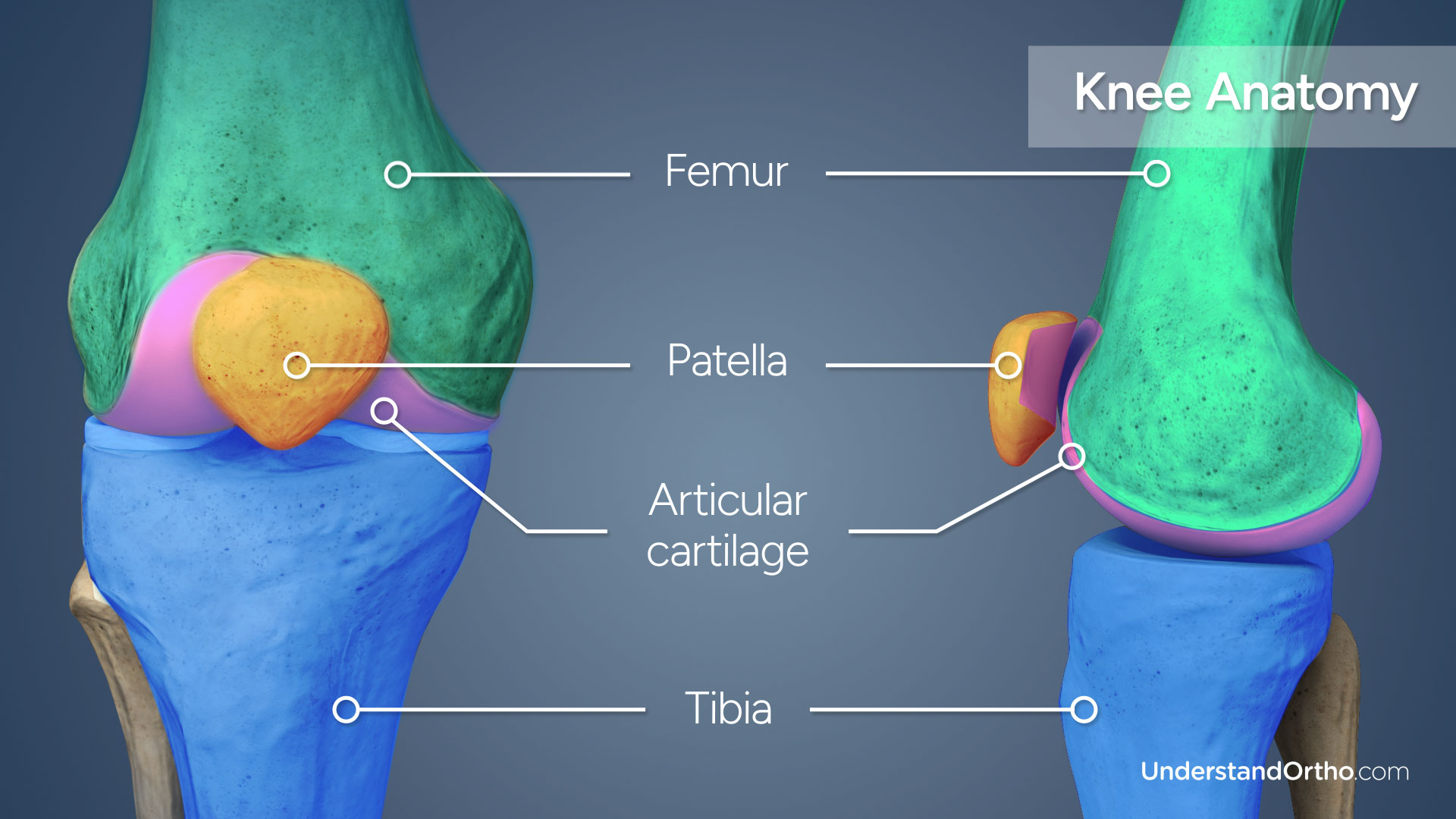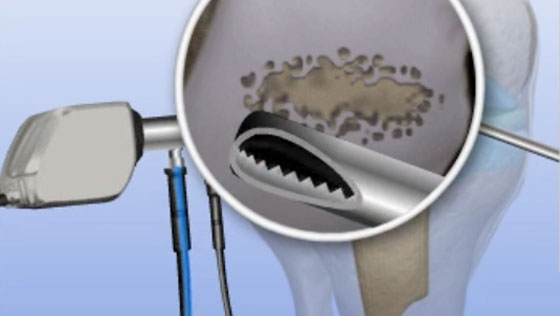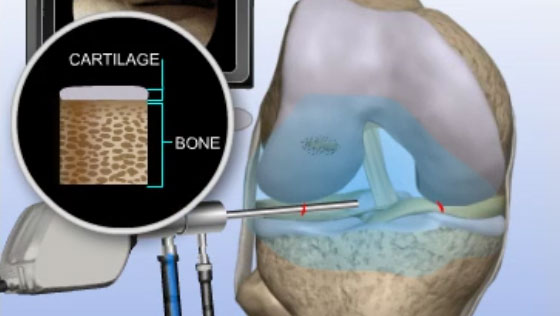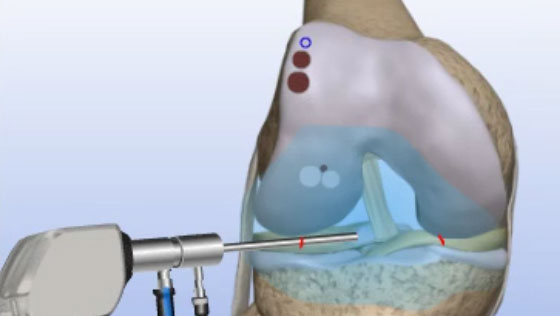What is Autologous Chondrocyte Implantation?
Autologous Chondrocyte Implantation (ACI) is a procedure performed to treat articular cartilage damage of the knee by harvesting a patient’s own cells, multiplying them, and re-implanting them into the damaged area.
Key statistics about Autologous Chondrocyte Implantation
- Approximately 12% of the population suffer from cartilage defects in the knee[1]
- 60% of patients who undergo knee arthroscopy are discovered to have cartilage defects[2]
- Approximately 85% of patients who undergo ACI experience good or excellent outcomes[3]
Expert Insights
The Goals of Treating Cartilage Injuries - Daniel Cooper, MD
Knee Anatomy
The knee joint is formed by three bones: the femur (thigh bone), the tibia (shin bone), and the patella (kneecap).
Articular cartilage covers the ends of the bones, helping with shock absorption and allowing the bones to glide smoothly against one another. Articular cartilage is made up of cells called chondrocytes.

Why is Autologous Chondrocyte Implantation performed?
Articular cartilage damage can expose the underlying bone, causing pain and affecting joint function as the knee moves. ACI is performed to address cartilage injuries to the knee joint in order to alleviate pain and restore a smooth joint surface. This procedure may also prevent the progression of cartilage damage and delay knee replacement.
Who needs Autologous Chondrocyte Implantation?
Damage to articular cartilage of the knee typically is caused by overuse or injury.
Ideal candidates for the procedure have smaller regions of cartilage damage (no widespread osteoarthritis or rheumatoid arthritis), have normal knee alignment and stability, and are relatively young, active, and willing to commit to physical therapy.
How is Autologous Chondrocyte Implantation performed?
ACI is performed in three separate phases:
-
Articular Cartilage Biopsy
- The surgeon will make small incisions around the knee joint and the arthroscope will be inserted into one of the incisions.
- Saline solution is pumped into the joint to expand it and improve visualization.
- Images from the arthroscope are sent to a video monitor where the surgeon can see inside the joint.
- A small portion of healthy articular cartilage (called a biopsy) is removed from a non-weight bearing region of the knee.
- The saline solution is drained, instruments are removed, and the incisions are closed using sutures.
-
Cell Culture
- The collected cells (chondrocytes) are sent to a laboratory where they are prepared and grown in a culture for a period of several weeks.
- This process multiplies the number of cells to ten million or more, which will be enough to attach to the original cartilage during the healing process and repair the damaged area.
-
Cell Implantation
- The surgeon will make an incision and access the knee joint.
- Any damaged tissue is removed from the injured cartilage and the surrounding area is smoothed.
- A second incision is made over the tibia and a flap of tissue covering the bone (called the periosteum) is harvested. This flap will serve as a patch. In some cases, a biomembrane will be used instead of the periosteum patch.
- The patch is sewn over the damaged cartilage and the cultured cells are injected underneath the patch.
- The incisions will be closed with sutures or surgical staples.
What are the risks of Autologous Chondrocyte Implantation?
Risks associated with autologous chondrocyte implantation may include:
- Bleeding
- Persistent swelling in the knee
- Failure of the procedure
- Infection
- Blood clots
- Nerve or blood vessel damage
How long does it take to recover from Autologous Chondrocyte Implantation?
Articular Cartilage Biopsy:
- 24 hours after surgery: Most patients are able to return home the same day as their procedure. Pain medication and blood thinners may be prescribed.
- 1-3 days after surgery: or longer depending on your surgeon’s advice. Weight should not be applied to the affected leg, and the knee should be iced and elevated.
- 2 weeks after surgery: Any non-dissolvable sutures are removed and bruising and swelling begin to subside.
Cell Implantation:
- 24 hours after surgery: Most patients are able to return home the same day as their procedure. A physical therapy routine will be established by the surgeon and physical therapist, and pain medication may be prescribed. Crutches will be provided to keep weight off the affected leg.
- 2 weeks after surgery: Any non-dissolvable sutures or staples are removed and bruising and swelling begin to subside.
- 6-12 weeks after surgery: Most patients can walk with full weight on the affected leg and resume most daily activities.
- 3-6 months after surgery: Most patients are able to return to light sport.
- 9-12 months after surgery: Most patients are fully recovered from the cell implantation portion of ACI.
What are the results of Autologous Chondrocyte Implantation?
Autologous cartilage implantation is a safe and effective procedure performed to treat mild to moderate areas of articular cartilage damage within the knee joint. For patients who meet eligibility criteria for the procedure, this treatment can provide significant improvement in knee function and persistent pain.
Find an Orthopedic Doctor in Your Area





